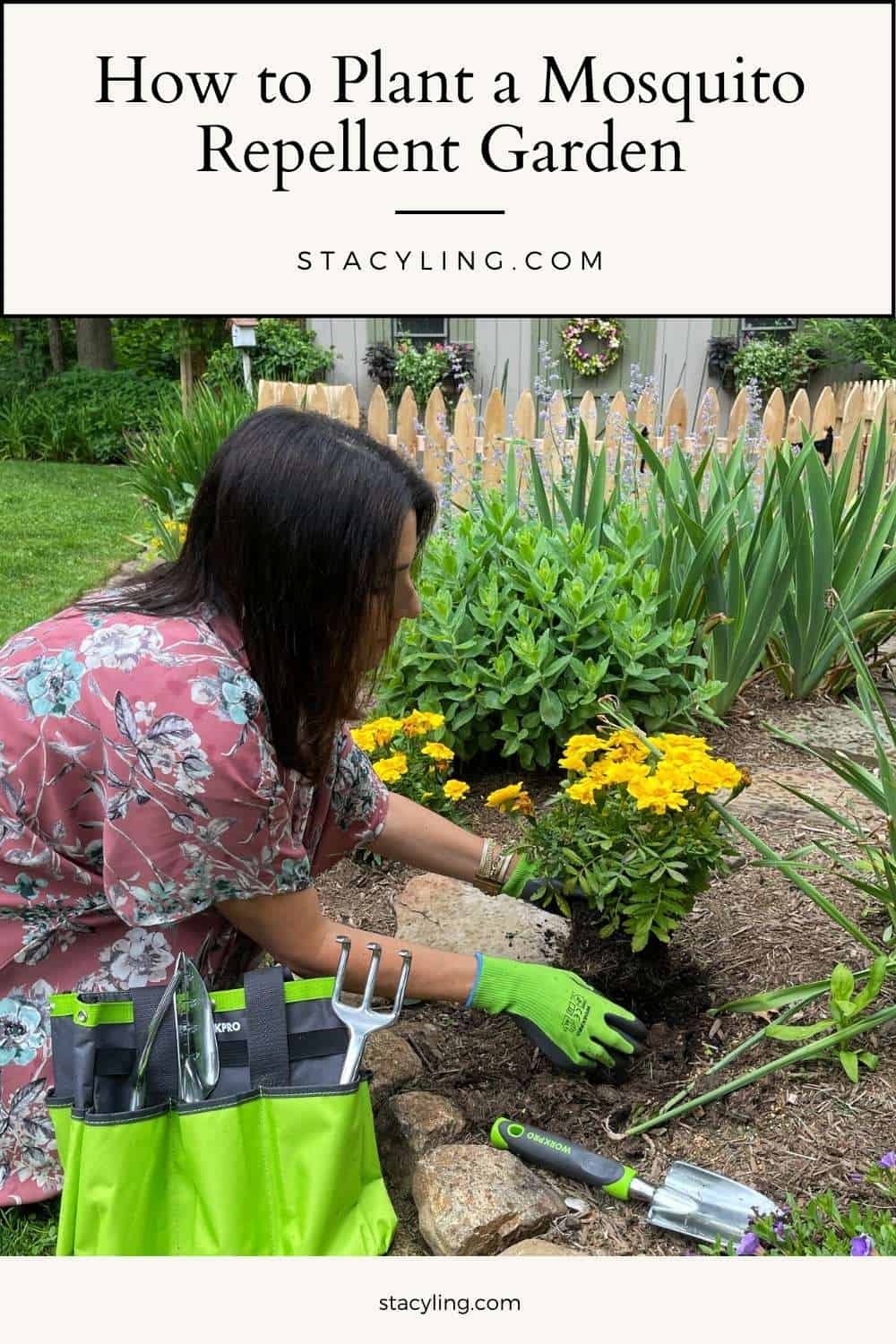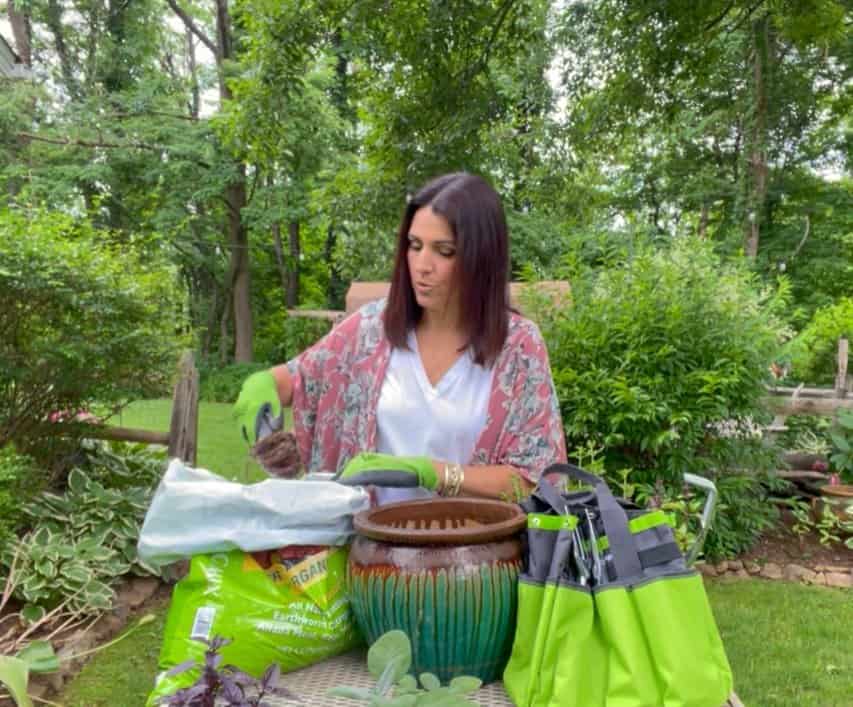Do you love summer nights outdoors but don’t love the bug bites that come with it? No need for DEET! Discover 15 easy-to-find mosquito repellent plants and learn how to design your own bite-free backyard in this ultimate guide.
I love being outside all summer long, don’t you? We’ve got lots of cozy new outdoor living spaces to hang out in so we are outside enjoying the scenery all the time! There are a few steps we can take to minimize mosquitos in our yards. Like burning citronella candles and tiki torches.
But we can also plant things to help keep them away. And they work really well.
So today, I’m sharing 15 easy-to find mosquito repellent plants so you can enjoy a bite-free backyard. Wait until you see how plants and flowers can be a natural bug repellent without the use of harsh chemicals or those ugly bug zappers!
(Posts on stacyling.com may contain affiliate links. Click HERE for full disclosure.)
Repel Mosquitos Naturally with a Beautiful Garden
As the warmer months approach, many of us look forward to spending time in our outdoor living spaces, whether it’s our backyard, patio, or balcony. Summer evenings spent outdoors can be pure bliss, but pesky mosquitos can quickly turn them into itchy nightmares.
While there are numerous chemical-based mosquito repellents available in the market, they often contain harmful ingredients that can have adverse effects on the environment and our health. Luckily, there are a variety of beautiful plants that not only enhance your landscape but also help keep mosquitos at bay.
Nature has provided us with an abundance of plant species that naturally repel mosquitos and other annoying bugs due to their unique fragrance and properties. By incorporating these plants we not only helps to keep mosquitos at bay but also add lots of beauty to our outdoor living spaces.
15 Easy-to-Find Mosquito Repellent Plants That Help Keep the Bugs Away
Here are 15 easy-to-find and popular plant options that you can consider planting in containers or flower beds.
1. Citronella
Citronella is perhaps the most well-known natural mosquito repellent plant. It emits a strong lemony scent that masks the odor of humans, making it difficult for mosquitos to locate their prey. Citronella can be planted in the ground or in pots and is often used in candles, torches, and essential oils for added protection.
2. Lavender
Lavender is known for its calming scent and beautiful flowers, but it’s also a natural mosquito repellent. The strong fragrance of lavender confuses and repels mosquitos, making it an excellent choice for outdoor living spaces. Lavender can be planted in pots or in the ground and requires well-drained soil and sunlight.

3. Rosemary
Rosemary is a popular herb in many kitchens, and it also serves as a natural mosquito repellent. Its strong fragrance masks the human scent and keeps mosquitos at bay. Rosemary can be planted in pots or the ground but requires well-drained soil and full sun.

4. Marigolds
Marigolds are not only vibrant and colorful, but they also repel mosquitos with their strong smell. The scent of marigolds is particularly effective in keeping away a variety of pests, including mosquitos, whiteflies, and aphids. Marigolds can be easily grown in pots or in the ground, and they thrive in sunny areas.
I am a huge fan of growing marigolds for this very reason. It’s a great companion plant is both beautiful and functional for your vegetable garden, flower garden, and outdoor living spaces. But what I love most? It looks amazing from spring through fall where you don’t need to change them out for a seasonal aesthetic.
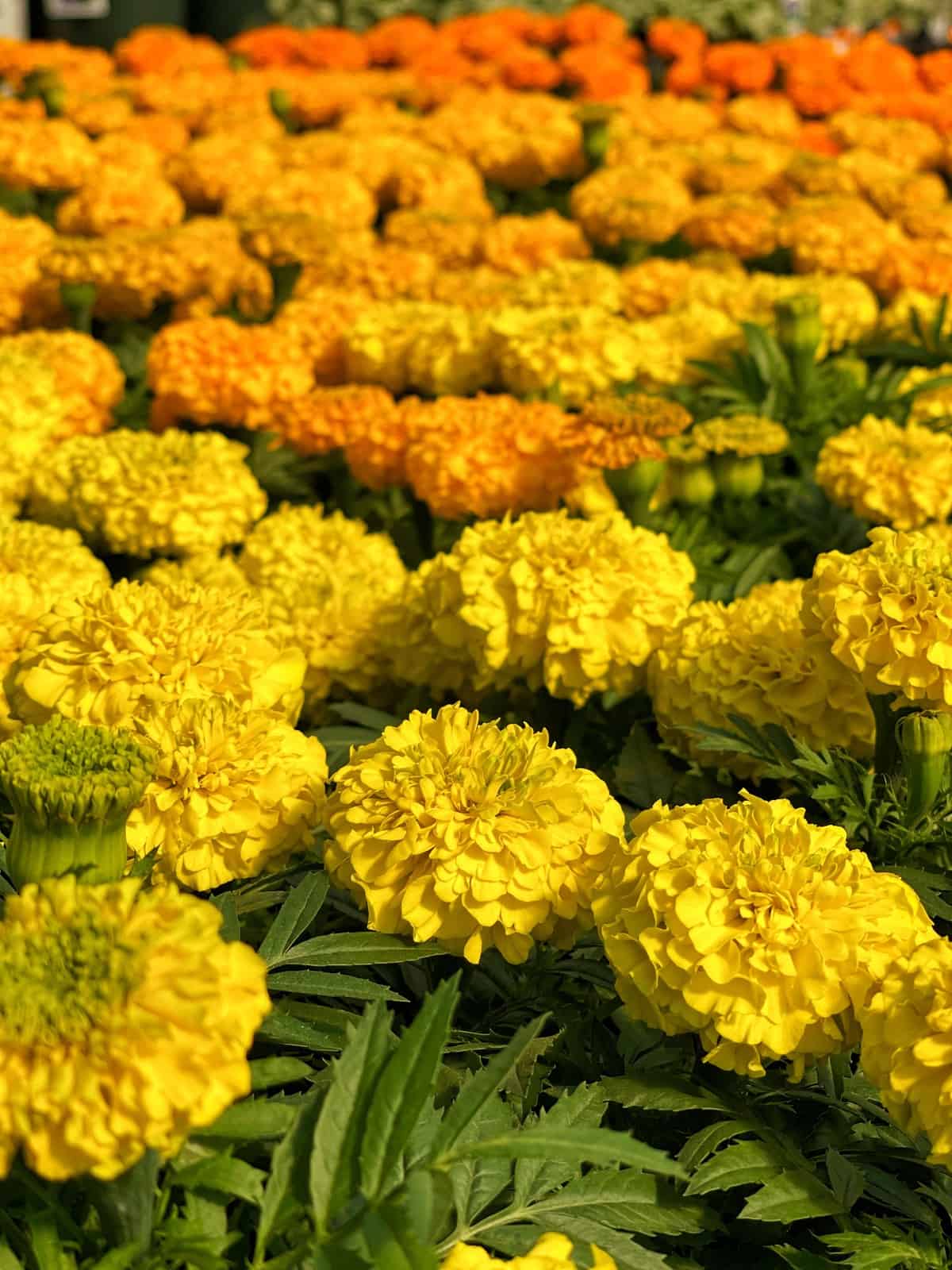
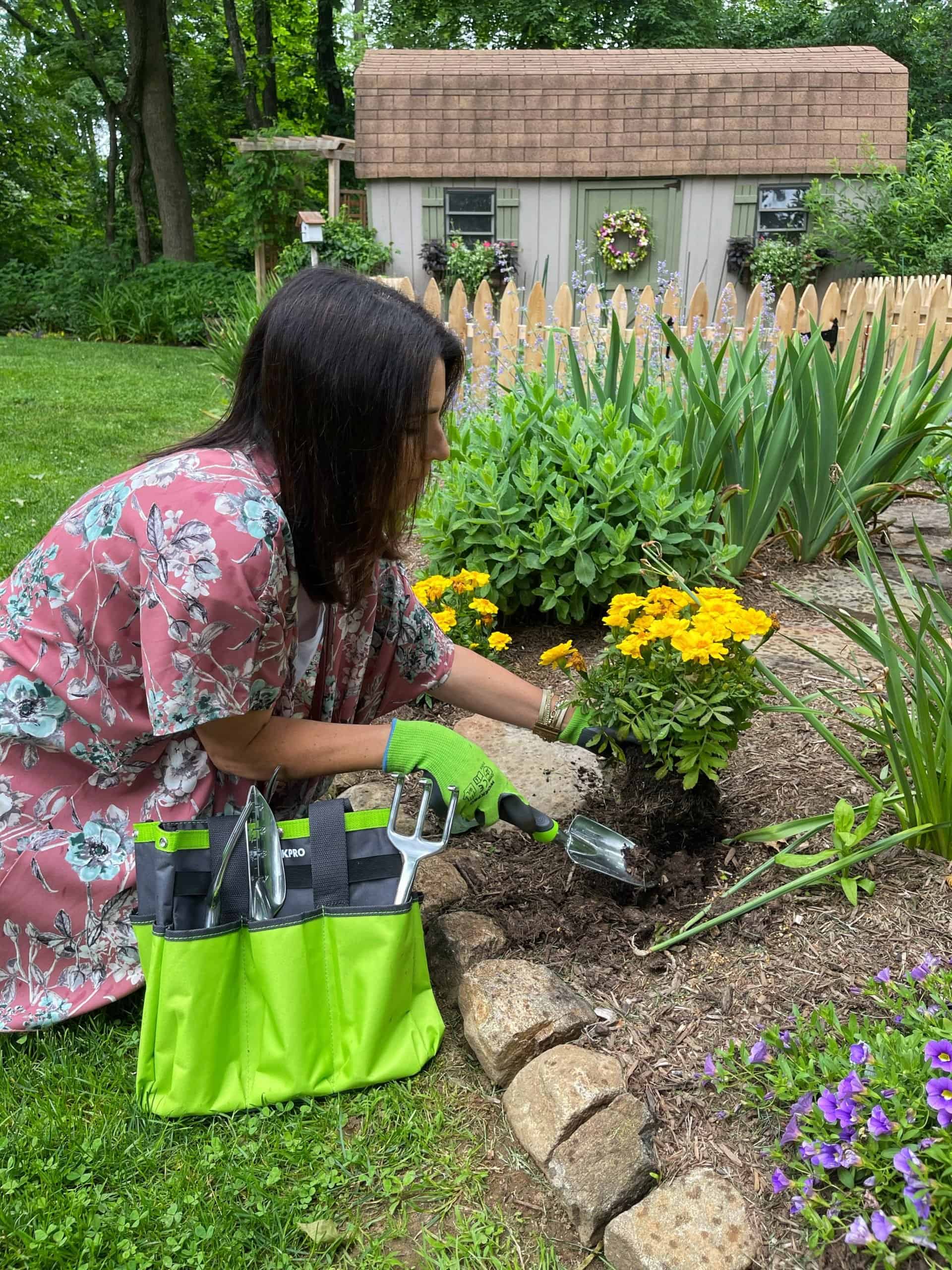
5. Lemon Balm
Lemon balm, also known as Melissa, has a citrusy scent that mosquitos dislike. It’s a hardy plant that can be grown in pots or in the ground, and it’s known for attracting bees and butterflies while repelling mosquitos.
6. Nepeta
Nepeta is a member of the mint family and is known to be highly effective in repelling mosquitos. Studies have shown that catnip can be even more effective than DEET, a common chemical found in mosquito repellents. Catnip can be grown in pots or in the ground, and it requires well-drained soil and full sunlight.
Keep in mind that neighborhood cats also love nepeta! I’ve noticed depressions in my garden plants from where they slept overnight.

7. Basil
While most gardeners know and love basil for its culinary uses, it also offers a surprising benefit – mosquito repellency! Basil deters mosquitos from laying eggs near standing water, making it a strategic choice around water features or birdbaths.
I plant mine around my tomatoes to help repel pests and improve flavor but also use them in pots around my outdoor living spaces too.

8. Lemongrass
Citronella oil, a well-known mosquito repellent, is the secret weapon of lemongrass. This architectural plant with its long, grassy leaves not only adds a unique touch to your garden but also provides a refreshing citrusy scent that mosquitos find unpleasant.
It looks beautiful and has been extremely effective at keeping the mosquitos away in the zen garden. So much so, it’s been a staple in my zone 6b garden ever since. Here, lemongrass is an annual, not a perennial, so I need to replant it yearly.=

9. Sage
Sage is another herb with a strong scent that deters mosquitos. This silvery-green foliage adds a touch of texture to your garden and can also be used in cooking.

10. Scented Geraniums
Scented geraniums come in a variety of delightful options, each with its own mosquito-repelling fragrance. They boast vibrant flowers and a long bloom time, making them a colorful and effective addition to your garden. I enjoy them as potted flowers in my zen garden. They look pretty with the different types of stone and help keep the bugs away from our back porch.

11. Mint
Most varieties of mint emit a strong, minty scent that mosquitos dislike. Mint is a fast-growing herb with a variety of culinary uses, making it a practical and functional choice for your mosquito repellent garden.
A note of caution though. Mint is highly invasive so don’t ever plant it in the ground. Only grow it in containers. My sister-in-law bought a home where the prior homeowner planted it in the ground and their property is a hot mess! Smells great when they mow it, but the plant completely took over the yard.
12. Ageratum (Floss Flower)
Ageratum, also known as floss flower, is a low-maintenance bloomer with beautiful blue flowers. It contains coumarin, a natural mosquito repellent, making it a lovely and effective addition to your garden. I’ve not invested much time growing ageratum in my gardens, but this year, I started it from seed indoors!
13. Bee Balm (Monarda)
Bee balm attracts pollinators like butterflies and bees while repelling mosquitos with its fragrant oils. This colorful bloomer comes in a variety of shades and adds a touch of whimsy to your garden.

14. Thyme
Thyme is a low-growing herb with a strong, herbaceous scent that deters mosquitos. A culinary favorite, thyme adds not only flavor to your dishes but also helps keep mosquitos at bay.

15. Allium (Ornamental Onion)
While garlic is well-known for its strong odor and repells mosquitos, it’s not the prettiest plant for an outdoor living space. So instead, I opt for alliums because they add unique flower forms and architectural interest to your garden while helping to keep the bugs away.

Mosquito Repellent Plants: Tips to Keep the Bugs Away From Your Outdoor Living Spaces
To naturally repel mosquitos from your patios, seating areas, and entryways:
- Plant Mosquito-Repellent Plants: Position them strategically around your outdoor spaces.
- Enhance Effectiveness: Crush the leaves to release more of their natural oils.
Also, remember these important steps:
- Outdoor Lighting: Choose outdoor lighting that doesn’t attract mosquitos.
- Eliminate Standing Water: Mosquitos breed in stagnant water, so keep your spaces dry.
- Consider Other Natural Methods: Use mosquito nets and fans to create air movement.

How to Plant a Garden that Repels Mosquitos
Now that we have a list of plants that help repel mosquitos, let’s design a garden. When I am planting a garden in containers, I consider the colors I want to decorate the space with. Am I feeling pink and purple hues? Or may bright sunny yellow flowers?
Determine the Location
The first step is to determine where your planters will be maintained. Does the area receive full sun, part sun, or shade? Understanding the location will help you choose the right plants.
Today, I’m planting a container garden that will be light enough to move around so I can use it in my various outdoor living spaces when we are hanging out at night. And I have a cool gardening hack that will save you money at the garden nursery AND keep your planters light enough to move around.
What You’ll Need to Plant a Garden that Repels Mosquitos
- plants
- container or outdoor planter (unless planting directly in the ground)
- potting soil (garden soil if planting directly in the ground)
- gloves
- garden tools
- plant food
- hand trowel or cup

Bug Repelling Plants for the Container Garden I’m Potting Up Today
- Marigolds
- Thai Basil
- Red Rubin Basil
- Trailing Oregano
- Oregano
- Sage
- Tri-Color Sage
Choose the Right Mosquito Repellent Plants
Once the location is determined, it’s time to shop for plants. If choosing to create a container design with a few plants, it’s important to make sure that they each have the same or similar light conditions as well as watering requirements.
Don’t make the mistake of buying plants just because you love the look. That’s a surefire way to a garden failure. So read the plant tags.
Understanding light and water conditions will help you take better care of your plants after the container garden is finished.
How to Design a Mosquito Repellent Garden
One of the things I like to do at the nursery is group my bug repelling plants together to see how they look. Are they aesthetically pleasing? I look at foliage, blooms, plant size, and the overall plant habit.
Design Tips: If you are designing a container garden, consider using the thriller, filler, and spiller method of planter design. Look for plants with height, fullness, and will trail over the edges of a planter. If planting directly in the ground, work in layers with shorter plants in the front and taller plants in the back. And plant your garden in odd numbers as they are more aesthetically pleasing to the eye.


Directions for Planting a Garden that Repels Mosquitos
It’s pretty simple to plant a garden with mosquito-repelling plants. Here’s how how to do it!
- Gather supplies.
- Add some potting soil to the container with a hand trowel so the plants have some soil to sit in.
- If planting directly in the garden, dig a hole using a hand trowel and add some fresh garden soil to the hole.
- Check the planting depth by adding your plants while still in their plastic nursery pots. You want the soil line to match up with about an inch down from the top of the container. If more soil is needed to get the right depth, add more.
- Remove plants from plastic pots and fan out the roots before setting them in the container. This encourages the roots to grow out into the potting soil.
- Backfill with potting soil, tamping it down as you go to remove the air pockets.
- Add a slow-release fertilizer to the container, water, and enjoy!
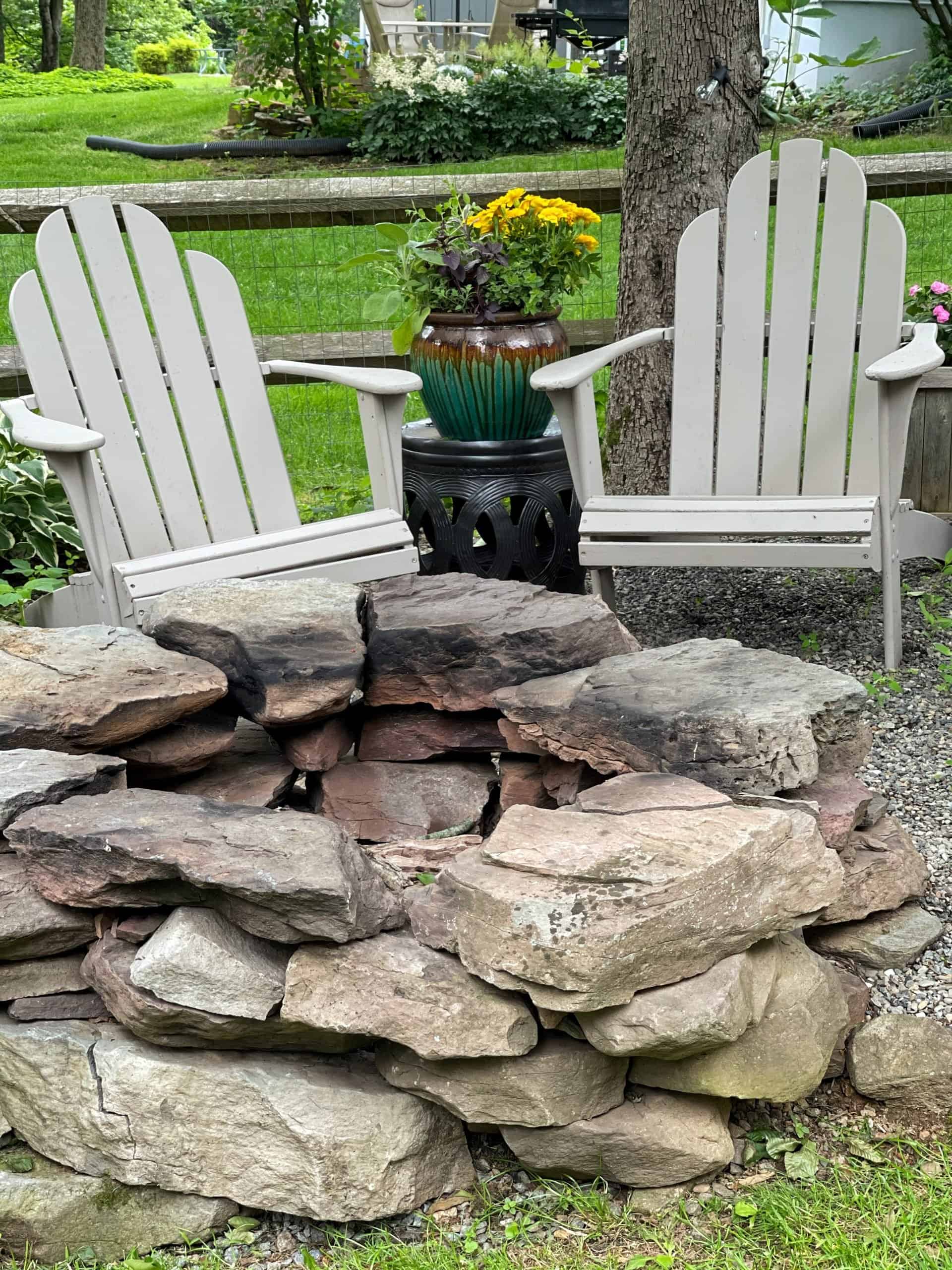
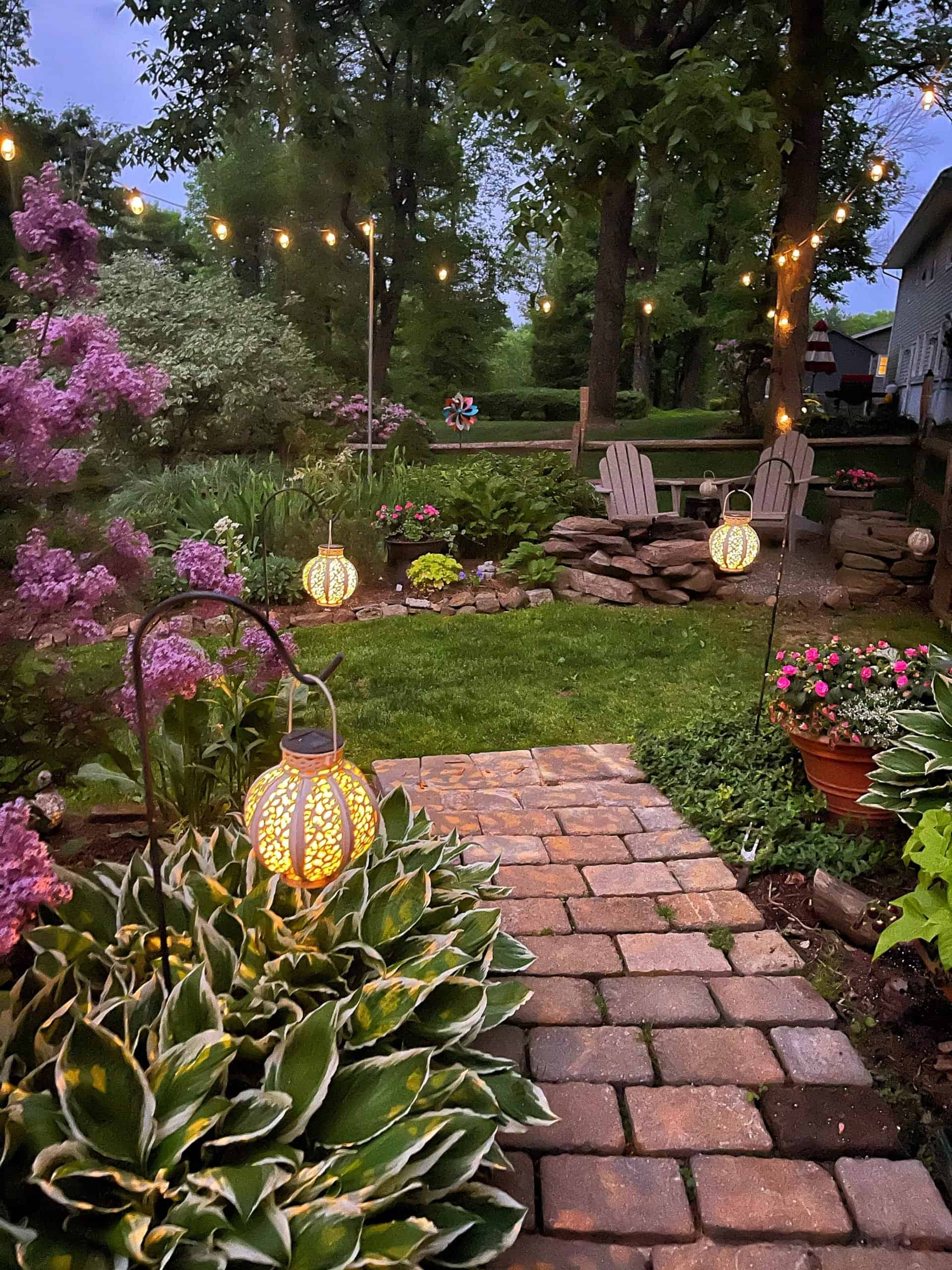
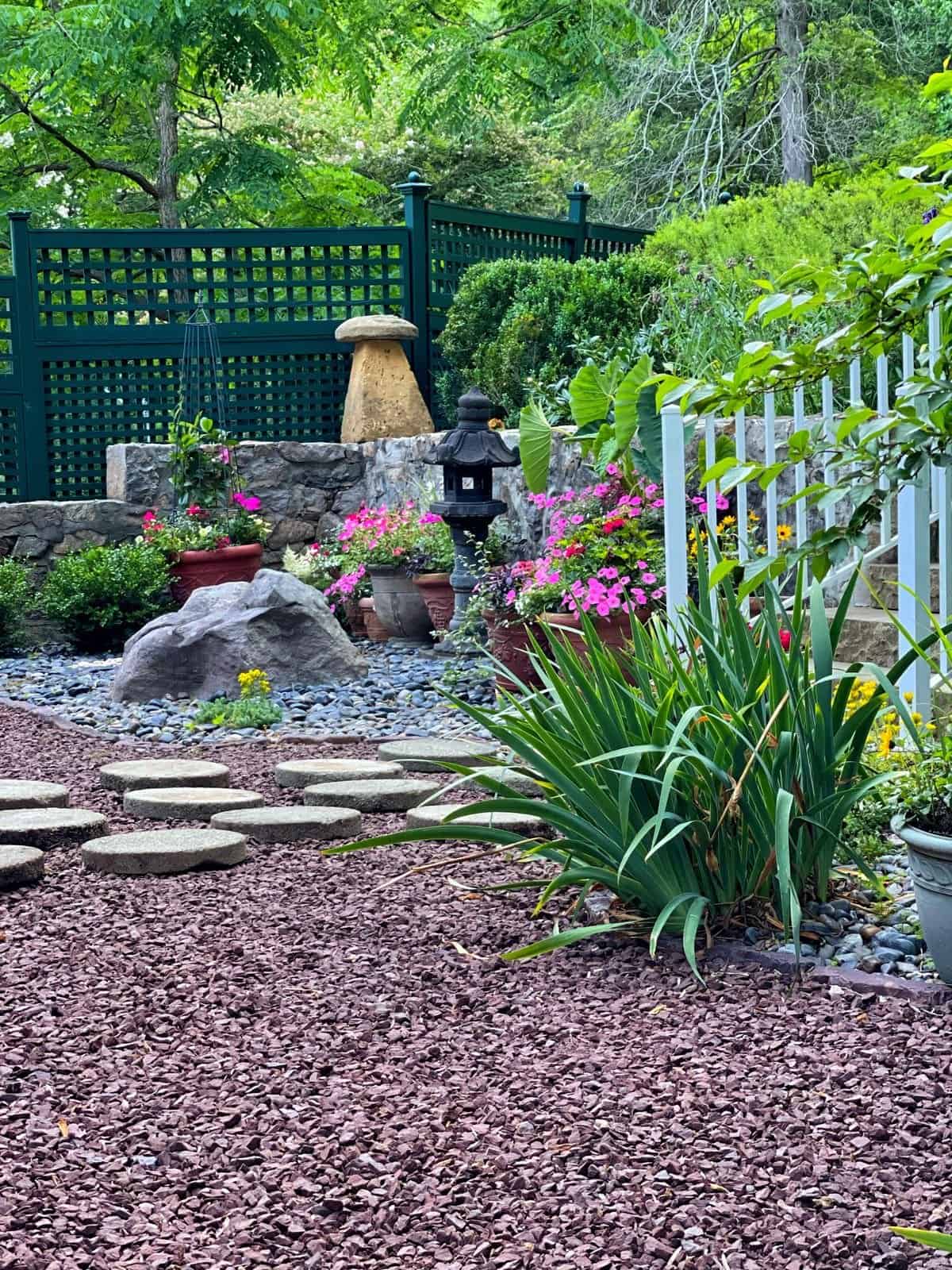
Final Thoughts About Planting Mosquito Repellent Plants in Your Garden
And that’s it! Didn’t it turn out beautiful? While I was at the nursery, I bought a few extra mosquito repellent plants to add to my fire pit garden border to make it prettier and keep the bugs away. Happy Gardening!
Did you know that there are plants that help repel mosquitos and keep the bugs away? Will you be planting some this year? I would love to know more in the comments below.
For more information about mosquito repelling plants, check out these university extension articles and helpful articles:
To drill down on more beginner gardening techniques and tips, please read these posts:
- Flower Gardening 101
- Growing a Cut Flower Garden for Beginners
- Container Garden Ideas for Beginners
- How to Start a Vegetable Garden
- Herb Gardening for Beginners
Thanks for dropping by the blog today. Enjoy a beautiful day.



